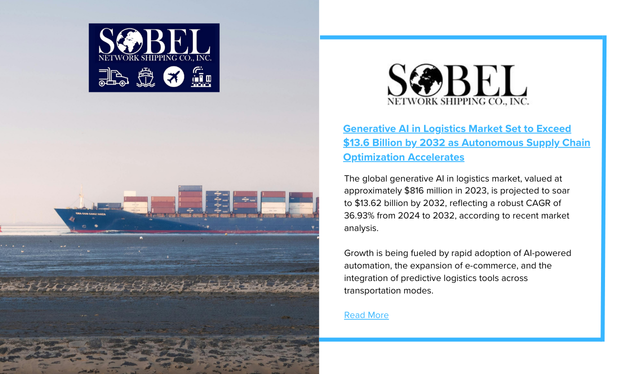The global generative AI in logistics market, valued at approximately $816 million in 2023, is projected to soar to $13.62 billion by 2032, reflecting a robust CAGR of 36.93% from 2024 to 2032, according to recent market analysis.
Growth is being fueled by rapid adoption of AI-powered automation, the expansion of e-commerce, and the integration of predictive logistics tools across transportation modes. Generative AI is transforming how logistics providers forecast demand, optimize routes, manage capacity, and adapt to real-time disruptions.
Key Technology Trends:
-
Variational Autoencoders (VAEs) currently lead the market due to their accuracy in simulating logistics scenarios and compatibility with enterprise ERP and supply chain systems.
-
Generative Adversarial Networks (GANs) are experiencing the fastest growth, particularly in autonomous delivery applications, where they simulate routes, optimize drone operations, and prepare systems for rare logistical challenges.
Deployment Insights:
-
Cloud-based solutions dominate with a 68% market share, offering scalability and seamless integration for global operations.
-
On-premise AI adoption is expanding in sectors requiring high data security and low latency, such as defense and specialized logistics.
End-User Trends:
-
Road transportation remains the largest segment, driven by last-mile delivery optimization, fuel efficiency gains, and predictive fleet management.
-
Shipping and ports are expected to see the fastest growth, leveraging AI for congestion management, vessel simulation, and energy efficiency.
Regional Outlook:
-
North America leads with early AI adoption and substantial investment in logistics automation.
-
Asia-Pacific is the fastest-growing region, propelled by e-commerce expansion, smart city initiatives, and port digitization.
Industry analysts highlight that operational excellence, digital agility, and strategic adaptability will be key differentiators as AI reshapes the competitive landscape of logistics. Companies that combine advanced AI capabilities with sustainable practices—such as carbon footprint reduction through optimized routing—are expected to gain a distinct market advantage.


